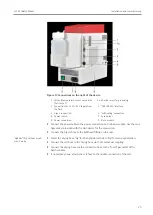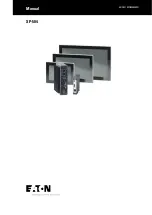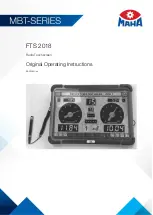
Security
HS 55 (Batch Mode)
10
2.4.3
Safety instructions for the operation of compressed gas containers and compressed gas
systems
¡
The operating gases are taken from compressed gas containers or local com-
pressed gas systems. The operating gases must have the required purity.
¡
Work on compressed gas containers and systems may only be carried out by indi-
viduals with specialist knowledge and experience in compressed gas systems.
¡
Compressed air hoses and pressure reducers may only be used for the assigned
gases.
¡
Pipes, hoses, screw connections and pressure reducers for oxygen must be kept
free from grease.
¡
Check all pipes, hoses and screw connections regularly for leaks and externally
visible damage. Repair leaks and damage without delay.
¡
Shut off the gas supply to the device prior to any maintenance and repair work
on the compressed gas containers.
¡
After successful repair and maintenance of the components of the compressed
gas containers or system, the device must be checked for proper operation prior
to recommissioning.
¡
Unauthorized assembly and installation are not permitted!
2.4.4
Handling of auxiliary and operating materials
The operator is responsible for the selection of substances used in the process as well
as for their safe handling. This is particularly important for radioactive, infectious,
poisonous, corrosive, combustible, explosive and otherwise dangerous substances.
When handling hazardous substances, the locally applicable safety instructions and
instructions in the safety data sheets from the manufacturers of the auxiliary and op-
erating materials must be complied with.
¡
Only operate the device when the exhaust unit is active. Ensure good room ven-
tilation in working rooms.
¡
Cleaning with hydrofluoric acid must be carried out in an exhaust chamber. The
operator must wear a rubber apron, gloves and a face mask when handling hy-
drofluoric acid.
¡
When measuring cyanide-containing material, ensure that prussic acid cannot be
generated in the waste bottle.
Protective goggles and rubber gloves have to be worn when handing reagents.
¡
Sodium borohydride (NaBH
4
) and sodium hydroxide (NaOH) are strongly corro-
sive, hygroscopic and, in solution, extremely aggressive.
Hydrogen is released by the reaction of sodium borohydride with the acidic sample
solution. The formation of a hot, explosive hydrogen-air mixture in the cells must be
excluded. The gas lines from the reaction beaker to the cell outlet must be kept oxy-
gen-free. To this end take the following measures:
¡
Always ensure that the cell with the windows is closed and gastight. Replace the
cell even in the case of small cracks or damage to the front sides.
¡
Guide the gas from the cell outlet to the exhaust unit.
Observe the following:
¡
The operator is responsible for carrying out suitable decontamination should the
device become contaminated externally or internally with dangerous substances.
¡
Splashes, drops or larger liquid spillages should be removed using an absorbent
material such as cotton wool, laboratory wipes or cellulose.
¡
For biological contamination, wipe the affected area with a suitable disinfectant,
such as an Incidin Plus solution. Then wipe the cleaned areas so that they are
dry.











































